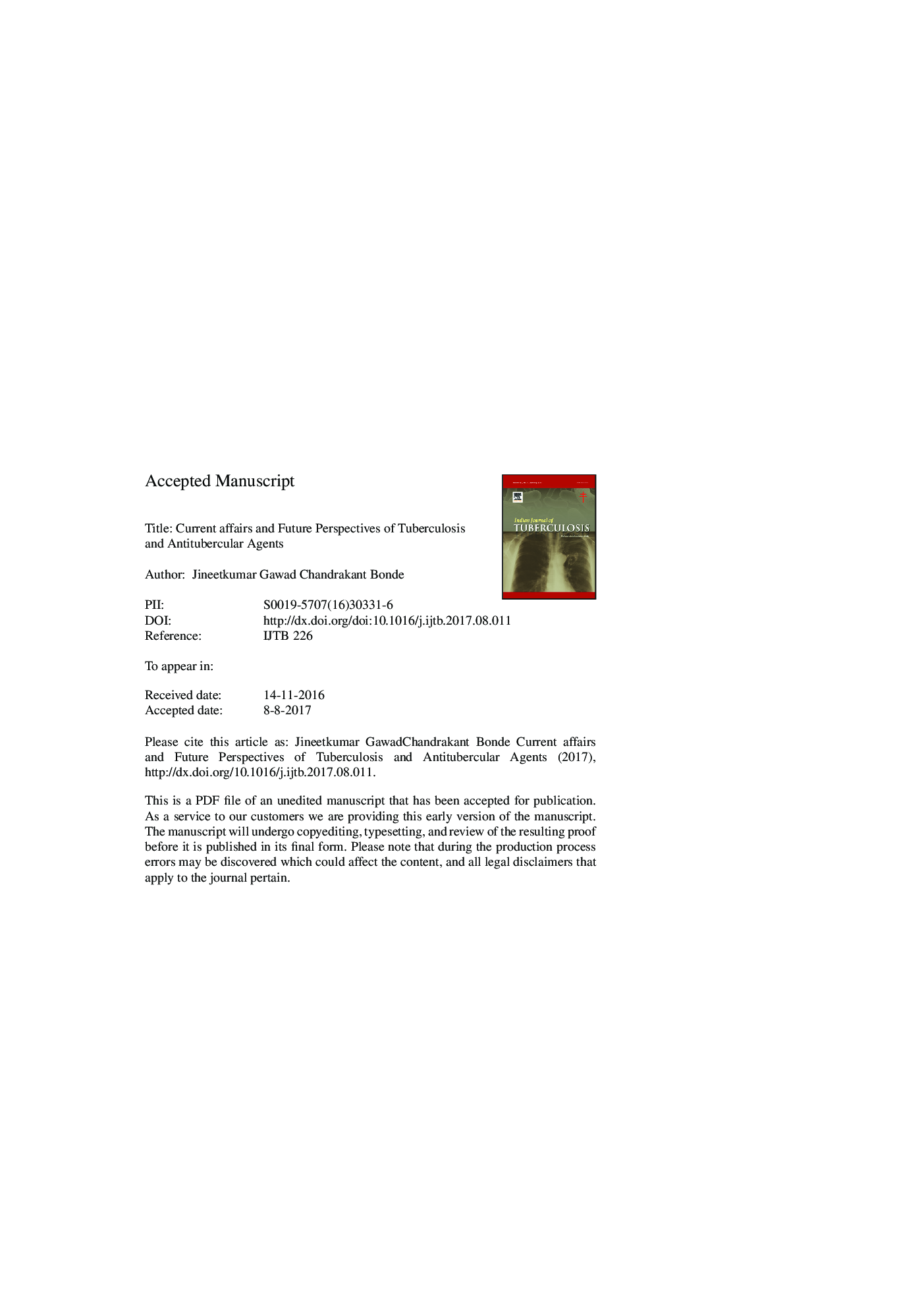| Article ID | Journal | Published Year | Pages | File Type |
|---|---|---|---|---|
| 8745833 | Indian Journal of Tuberculosis | 2018 | 19 Pages |
Abstract
Tuberculosis (TB) is the major threat for humans from past several decades. Even after advent of several antitubercular drugs, researchers are still struggling for the mycobacterial infections in humans are TB and leprosy. Chronic infections caused by Mycobacterium tuberculosis and Mycobacterium leprae. A particular problem with both of these organisms is that they can survive inside macrophages after phagocytosis, unless these cells are activated by cytokines produced by T-lymphocytes, because of this researchers are not yet succeeded in finding effective treatment on TB. In recent years TB has spread globally and became the major issue for world healthcare organizations. Some compounds like benzothiazinones shown promising activity against mycobacterium, few compounds are in pipeline which may exhibit improved pharmacological effect. Decaprenylphosphoryl-d-ribose 2â²-epimerase (DprE1) is the vulnerable target for antitubercular drug discovery. DprE1 is a flavoprotein that along with decaprenylphosphoryl-2-keto-ribose reductase catalyses epimerization of decaprenylphosphoryl-d-ribose to decaprenylphosphoryl-d-arabinose through an intermediate formation of decaprenylphosphoryl-2-keto-ribose. This conversion makes DprE1 a potential drug target. Further research requires to tackle the biggest hurdles in Tuberculosis treatment, i.e. multi drug and extensively drug resistance.
Keywords
Related Topics
Health Sciences
Medicine and Dentistry
Infectious Diseases
Authors
Jineetkumar Gawad, Chandrakant Bonde,
